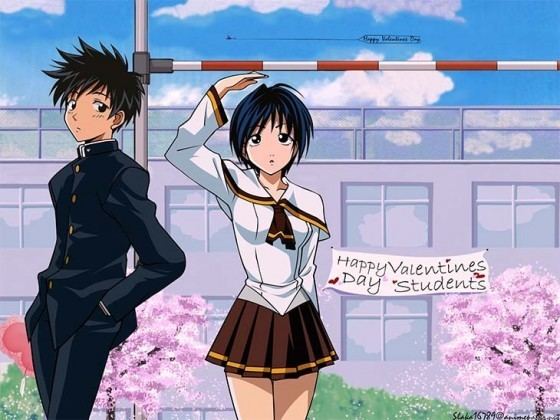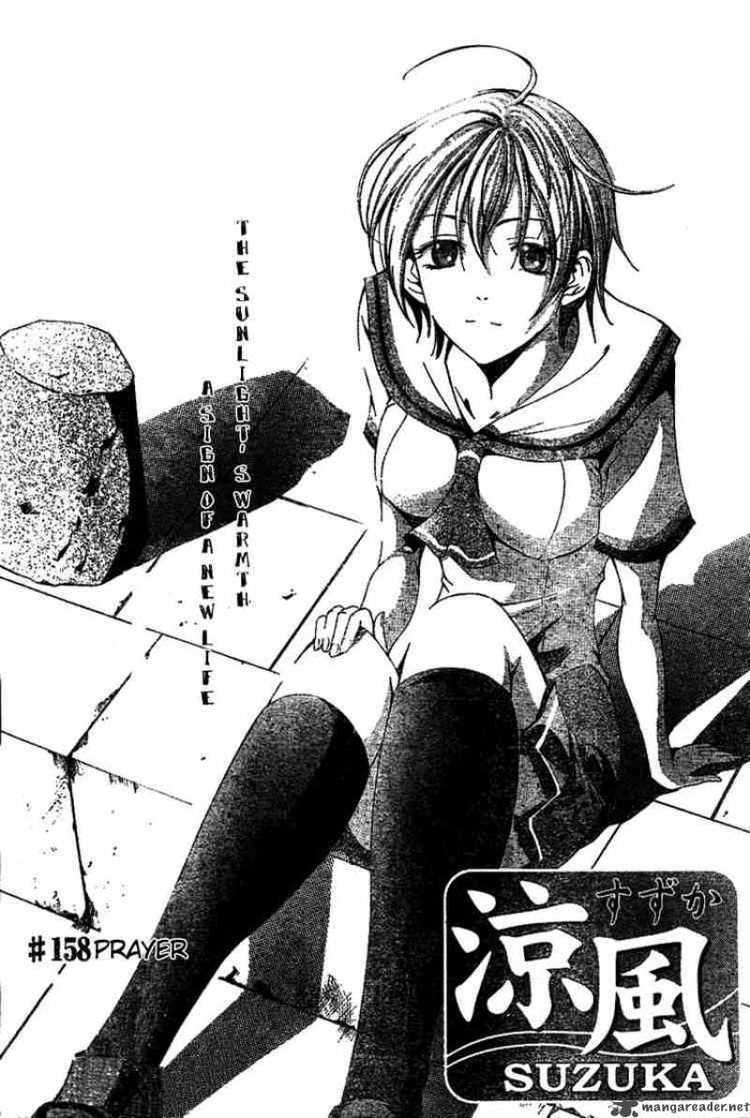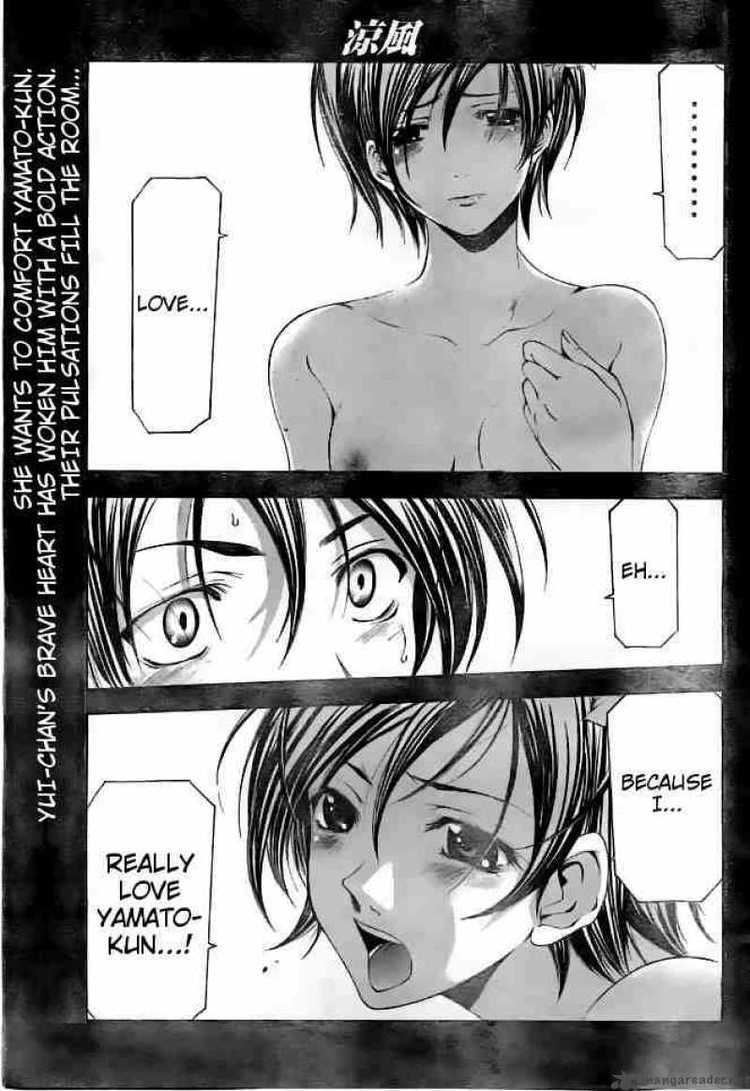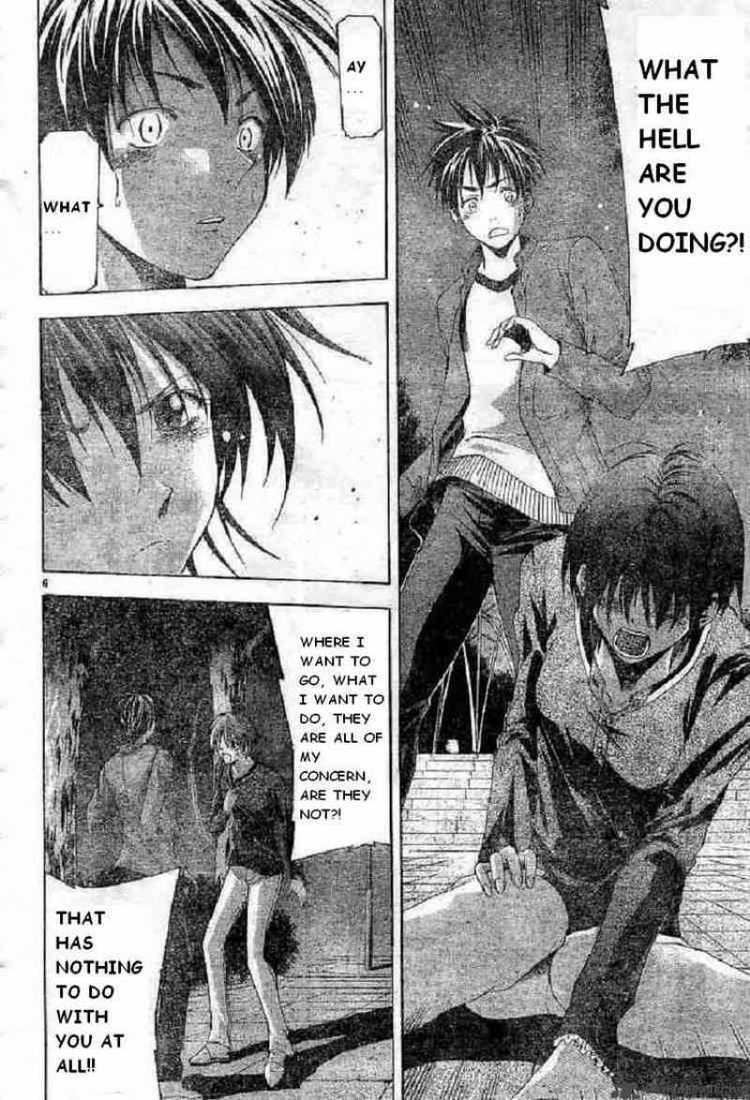 | ||
Original run 3 March 2004 – 21 September 2007 Similar Fuuka, New Game!, School Rumble, Strawberry 100%, We Were There | ||
Suzuka (Japanese: 涼風) is a Japanese manga written and illustrated by Kouji Seo. The series is a character-driven romance story that uses the athletics of track and field as a subplot. The story primarily follows the life of the teenager Yamato Akitsuki, who moved to Tokyo to change himself, and his main love interest Suzuka Asahina, a talented and highly scouted high jumper who lives in Yamato's aunt's dormitory and attends his new high school.
Contents

Suzuka was serialized in the Japanese magazine Weekly Shōnen Magazine published by Kodansha. It was adapted into a twenty-six episode anime series and aired on TV Tokyo in Japan between 6 July 2005 and 28 December 2005. Both versions of the series have been licensed for release in North America. The manga has been licensed for publication in North America by Del Rey Manga under their mature line; it published the first 15 volumes, before it folded and transferred its publication rights to Kodansha USA. The anime series has been licensed and released by Funimation Entertainment. Two light novels written by Ayuna Fujisaki based on the series have also been released. A related series, Kimi no Iru Machi (A Town Where You Live), ran in Weekly Shōnen Magazine from 2008 until 2014, and a sequel, Fuuka, has been running in Weekly Shōnen Magazine since 2014.

Plot

Suzuka is a sports-themed romance comedy that intertwines the pursuit of love and athletics. The story is based around Yamato Akitsuki, a young man from rural Hiroshima Prefecture moving to the big city of Tokyo, and his new next-door neighbor, Suzuka Asahina, a skilled high jumper. Yamato falls in love with Suzuka and pursuing a relationship with her he joins the track and field team hoping to impress her. After joining, Yamato discovers that he has the potential to become a top hundred-meter sprinter.

Suzuka's character-driven plot predominantly makes use of dramatic structure to facilitate character development. Characterization is further achieved through the use of character back-story. The story in general employs a realistic tone, but occasionally uses surreal humour. Some events covered in the story are: track competitions, vacations, culture festivals, and outings to a Karaoke Box and a theme park. The manga and anime follow the same storyline, though there are minor differences. One of these changes is that the nude scenes are less graphic in the anime than the manga. Another disparity is the hair color of some of the characters such as the character Miki, who is depicted as having bright red hair on the covers of the manga, but is portrayed with red-brown hair in the anime.
Characters

Yamato Akitsuki, the main protagonist of the series, has moved from his home in the Hiroshima Prefecture to stay at his aunt's dormitory in Tokyo. Yamato falls in love with his new next-door neighbor, Suzuka Asahina, a girl from Yokohama who was scouted by a local high school because of her high jump athletic ability. While the main female lead remains Suzuka throughout the series, Yamoto later meets several other girls: Honoka Sakurai, a girl whose family are caretakers of a local Shinto shrine, Miki Hashiba, a sprinter and friend of Suzuka, and others. Yamato also develops a friendship with Yasunobu Hattori, a perverted young man who dreams about polygamy and often gives relationship advice to Yamato.
Manga

The Suzuka manga first appeared as an initial one shot in the Japanese manga magazine Weekly Shōnen Magazine, published by Kodansha, during December 2003.It was first serialized in Weekly Shōnen Magazine on 3 March 2004 and was completed on 21 September 2007, with one hundred sixty-six chapters in total. The chapters were compiled in eighteen bound volumes by Kodansha, with each volume being released roughly quarterly. These volumes often include character profiles or extra stories. Suzuka has been licensed for North American publication by Del Rey, becoming the publisher's first sports manga and second title to be added under its mature line, the first being the manga Basilisk. Fifteen volumes had been released in English with the first volume released on 29 August 2006 and the last, a 592-page collection containing volumes 13, 14 and 15, released in North America on 31 August 2010, before Del Rey Manga folded and transferred its publishing rights to Kodansha USA. Currently now, it's been both relicensed and re-released by Kodansha Comics USA continuously in digital edition up to Volume 18.
Anime

In April 2005, Weekly Shōnen Magazine announced through their website that Suzuka was being adapted into an anime. The animated TV series was directed by Hiroshi Fukutomi and was co-produced by Studio Comet and Marvelous Entertainment. The twenty-six half-hour episode series originally aired weekly on TV Tokyo in Japan on Wednesdays running from 6 July 2005 to 28 December 2005. The anime follows relatively close to the first seventy-two chapters of the manga, but changes were made to accommodate younger audiences: The hole in the wall between the rooms of Suzuka and Yamato does not exist,Yamato also sees Suzuka for the first time outside, instead of inside the school gym, and many scenes were removed or subdued such as those in the bath house. In addition, a fight song for the Hiroshima Toyo Carp baseball team Soreyuke Carp (それ行けカープ, lit. Go Go Carp) is included in the anime and soundtrack, but cuts off before the 4th stanza because of a reference to Japanese sake.
The anime was dubbed in Tagalog and broadcast by the Philippine station Hero starting on 3 December 2006. The anime series has been licensed for North America by FUNimation, and released with the tagline "Love is not a Spectator Sport". Their first DVD was released on 12 June 2007.
Music
The anime's music, including the background music and theme songs, was composed by Takumi Masanori and POM. The vocals for the opening and ending songs were provided by COACH☆. Except for one member of the group COACH☆, all worked as a voice actor for one of the series' characters. For the North American release, FUNimation had the opening and ending songs re-written and performed in English by Kristine Sa. In 2005, three Suzuka soundtrack albums were released in Japan through King Records.
Light novel
On 17 May 2007, a Suzuka light novel was published by Kodansha under its "KC Novel" label. It contained three short stories written by Ayuna Fujisaki with illustrations done by the series creator, Kouji Seo.
Spin-offs
A portion of Seo’s manga A Town Where You Live takes place at the apartment complex where the Akitsukis are neighbors. Suzuka and Fuuka also make cameo appearances in some of the story’s chapters. In February 2014, a manga spin-off was released under the name Fuuka. It follows the story of Yuu Haruna, a 15-year-old boy who is a loner and his only friends are those on Twitter. After moving to live with his three sisters, two older one younger, he meets Fuuka, who is Yamato and Suzuka's daughter and now a high school student. Initially, Fuuka perceives Yuu as a pervert due to an embarrassing encounter during their first meeting. However, after learning about Fuuka's dream of starting a music band, he befriends her and they later fall in love. However, a tragic event prompts a new legend involving Yuu and his friends to begin.
Reception
Suzuka has been compared to other manga such as Love Hina, Maison Ikkoku, and Kimagure Orange Road since, early on, it used similar plot structure and plot devices. These comparisons became less frequent as the story developed. According to Kouji Seo, Suzuka was to be a romance story from the beginning, and he had no intention of creating a harem manga. Since the North American version is uncensored, this caused the manga to be rated "Mature" and sold in shrink wrap. Despite the amount of fan service, the manga does not focus on that element. Kouji Seo pays attention to detail which can be seen in the clothing that gives off the sensation they are made out of different material along with the reflections in the windows during the nighttime. This detail can also be seen in his characters as they all have complex personalities that make them interesting and have substance. Overall the reception of the manga has been positive.
The anime has been described as having "all the trappings of a standard high school romantic comedy", but lacks the spirit and craftsmanship of the manga. Since the anime is a close adaptation from the manga, the criticisms of the plot are the same of it being described as generic. The anime sells "...themselves solely on the merits of character development". One effect of this character development is that some viewers will find the title character and the male lead unlikable, with complaints of lack of sympathy for both characters. The animation is considered to be ordinary with some scenes that have timing problems, look awkward, or have objects that seem oversized. The voice actors performances are considered to be mundane and sound rather flat, in both Japanese and English languages. Viewers with sensitive hearing might also pick up on the switches between mono and stereo audio in the different episodes. The sports scenes are poorly animated, and the best animated scenes include night-time scenes. Overall the reception of the anime so far has been mixed.
The response to the soundtrack for the anime is somewhat mixed. Most find the music respectable, but some may detest it when it tries to be funny. The opening and ending songs that were re-written and performed in English made the songs fairly close approximations of the originals and worked out better than one might imagine, but others still prefer the Japanese versions.
